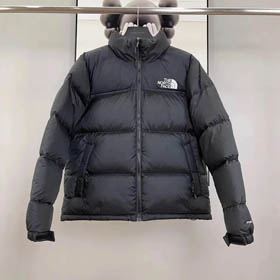Hermès: The Epitome of Artisanal Luxury and Timeless Elegance
2025-04-16
Hermès: The Epitome of Artisanal Luxury and Timeless Elegance
In the pantheon of luxury brands, Hermès stands apart as a paragon of understated opulence, where every creation is a testament to meticulous craftsmanship, timeless design, and an unwavering respect for heritage. Founded in 1837, this Parisian maison has evolved from a humble harness workshop into a global symbol of refined taste, synonymous with products that marry functionality with artistry. From its iconic leather goods to its silk scarves, fragrances, and home collections, Hermès embodies a philosophy where quality triumphs over quantity, and each piece is crafted to endure for generations.
A Legacy Forged in Horsehair and Leather: The Origins of Hermès
The story of Hermès begins with Thierry Hermès, a young artisan from Krefeld, Germany, who moved to Paris in 1837 and opened a workshop specializing in handcrafted harnesses and saddles for the European elite. At the time, horse-drawn carriages were the pinnacle of transportation, and Hermès quickly gained a reputation for producing equipment that combined durability with elegant design. His clients included European royalty and wealthy industrialists, drawn to the brand's commitment to using the finest materials and artisanal techniques.
In 1880, Thierry's son Charles-Émile Hermès relocated the workshop to 24 Rue du Faubourg Saint-Honoré in Paris, a location that remains the brand's spiritual home today. Under his leadership, Hermès expanded beyond equestrian gear, introducing leather goods for everyday use, such as handbags and travel trunks. The first Hermès handbag, the "Haut à Courroies" (1892), was designed for equestrian use, featuring a sturdy canvas and leather construction with adjustable straps—a design that would later inspire some of the brand's most iconic bags.
The 20th century marked a period of creative expansion for Hermès. In 1925, the brand debuted at the International Exhibition of Modern Decorative and Industrial Arts in Paris, showcasing its ability to blend tradition with modernity. By the 1930s, Hermès had introduced silk scarves, a category that would become as emblematic as its leather goods. Each scarf, printed with intricate designs inspired by art, history, and nature, was hand-rolled at the brand's workshops, embodying the spirit of "l'art du faire" (the art of doing).
The Art of Craftsmanship: Where Hands Transcend Machines
At the core of Hermès' allure is its uncompromising dedication to artisanal craftsmanship, a tradition upheld by over 16,000 artisans working in 42 workshops (or "ateliers") worldwide. Unlike many luxury brands that have embraced mass production, Hermès remains committed to handcrafting each item, a process that can take weeks—even months—for its most complex pieces.
Leather Goods: The Pinnacle of Artistry
Leather goods are the heart of Hermès, and each bag is a masterpiece of precision and patience. The brand sources the finest hides from around the world, including rare skins like crocodile, alligator, and ostrich, as well as premium calfskin and cowhide. Artisans, trained for years in the "Hermès method," meticulously cut, stitch, and finish each piece using traditional tools: wooden lasts for shaping, saddle stitching with waxed linen thread (a technique that ensures durability), and hand-applied patinas to enhance the leather's natural beauty.
The BirkinKelly
Silk Scarves: Woven Poetry
Hermès silk scarves, or "carrés," are wearable artworks that begin with a sketch by an artist (often commissioned from renowned illustrators or painters). The design is transferred to a screen for silk-screen printing, a technique that allows for vibrant colors and intricate details. Each scarf, made from 100% mulberry silk, undergoes up to 30 steps, including washing, stretching, and hand-rolling the edges—a task that takes a skilled artisan 45 minutes per scarf. Since the first scarf, "The Chariot of the Sun" (1937), over 2,000 unique designs have been created, each telling a story through motifs ranging from equestrian scenes to space exploration.
A Legacy of Iconic Creations: Beyond Bags and Scarves
Hermès' portfolio extends far beyond leather and silk, encompassing a range of categories where the same ethos of craftsmanship and innovation applies.
Ready-to-Wear and Accessories: Understated Elegance
Hermès' fashion collections, launched in the 1970s, embody "luxe minimalisme"—clean lines, luxurious fabrics, and subtle details that eschew ostentation. The brand's signature orange box, introduced in the 1940s, became a symbol of luxury, while accessories like the Clic H braceletJumping H earrings
Home and Lifestyle: Art for Daily Life
The Hermès home collection, including porcelain, crystal, and furniture, transforms everyday objects into works of art. The Faubourg porcelain line, with its delicate gold trim and equestrian motifs, and the Pegase crystal collection, inspired by mythological wings, reflect the brand's ability to infuse functionality with beauty. Even its fragrances, such as Eau d'HermèsLeather Forever
Watches: Mechanical Precision with Artistic Flair
Hermès entered watchmaking in 1928 with the "Clipper" wristwatch, but its modern horological fame stems from designs like the ArceauSlim d'Hermès
The Philosophy of Hermès: Heritage, Exclusivity, and Sustainability
Hermès' success is rooted in three core principles that have guided the brand for nearly two centuries:
- Heritage as a Living Legacy: The brand honors its equestrian origins while embracing innovation. For example, the Cape Cod watchSilk-In Motion collection, which transforms scarf designs into dynamic fashion pieces, show how tradition can evolve without losing its essence.
- Exclusivity Through Scarcity: Hermès intentionally limits production to maintain quality and rarity. Waiting lists for Birkin and Kelly bags can stretch for years, not as a marketing ploy, but because each bag is made to order by a single artisan—a practice that ensures no compromise on craftsmanship.
- Sustainability as a Moral Imperative: Long before "ESG" became a buzzword, Hermès prioritized ethical sourcing and environmental responsibility. The brand owns its tanneries (such as the Le Puy and Constance workshops), ensuring traceability and humane treatment of materials. In 2020, it launched Hermès in the Making, a campaign showcasing its artisans and commitment to "slow luxury," emphasizing that true luxury is durable, both in quality and in its impact on the planet.
Conclusion: Hermès as a Cultural Institution
Hermès is more than a luxury brand; it is a custodian of craftsmanship, a storyteller through design, and a symbol of enduring elegance in a fast-paced world. Its products are not just possessions but heirlooms, meant to be cherished and passed down, embodying the brand's silent promise: "To create objects that outlive us, carrying forward the spirit of those who made them."
In an era where luxury often equates to logos and hype, Hermès stands as a quiet rebel, proving that true sophistication lies in the details—an impeccably stitched seam, a thoughtfully designed buckle, or a silk scarf that captures the essence of a bygone era. It reminds us that the most enduring luxury is not in what we own, but in the care and passion with which things are made.
For more insights into the world of timeless luxury and artisanal excellence, visit https://yesfinds.net/.



















